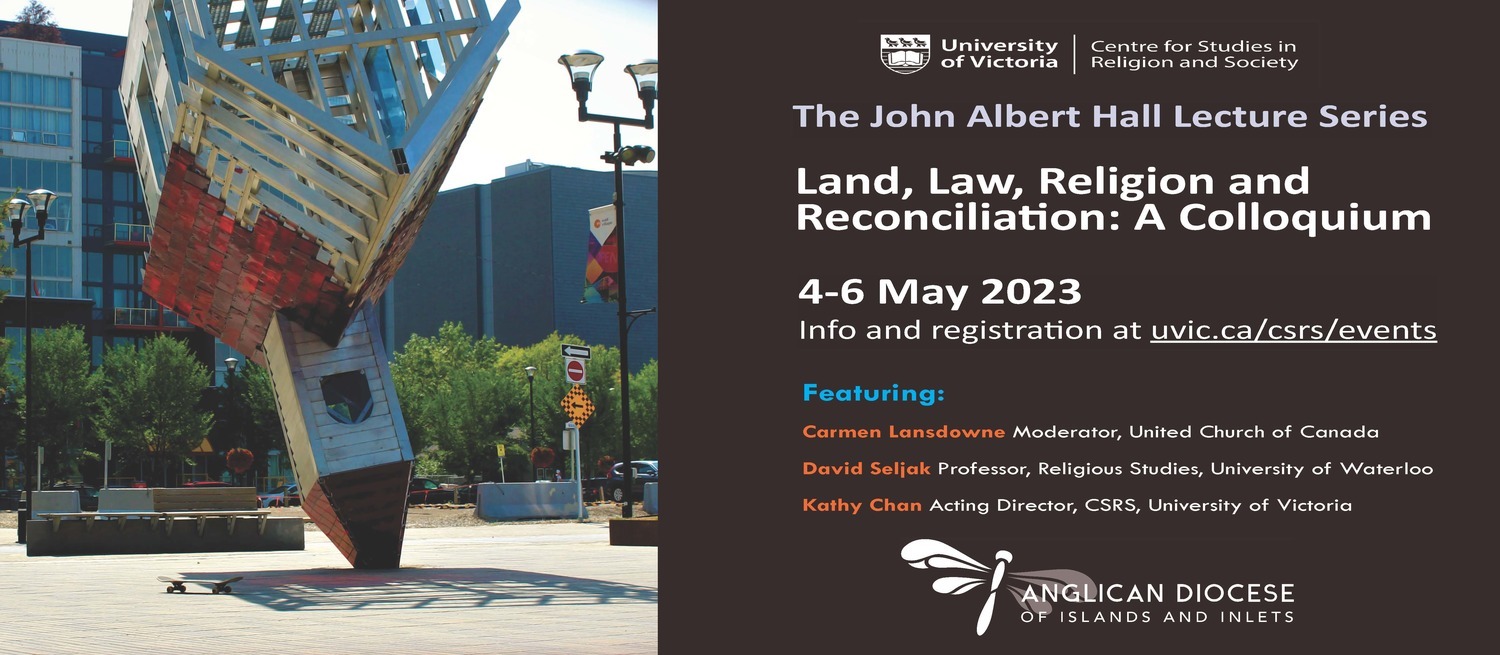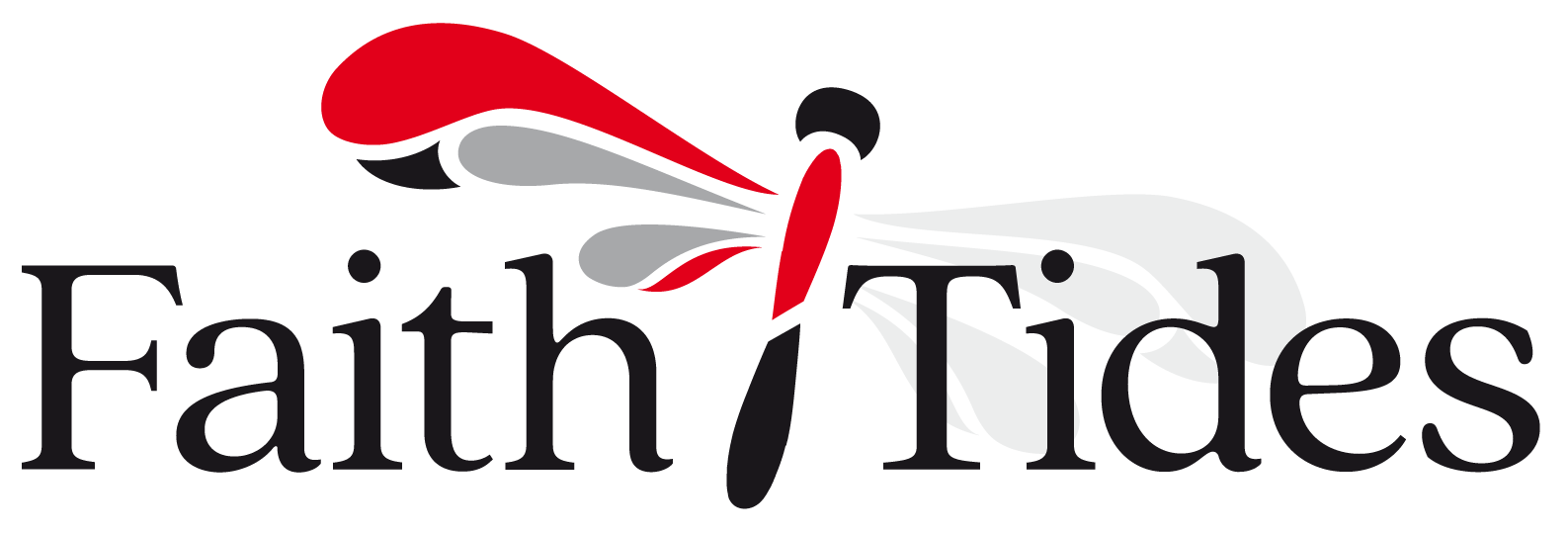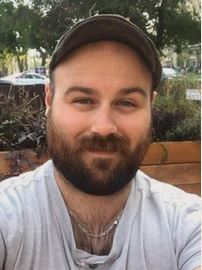From May 4 to 6, the University of Victoria’s Centre for Studies in Religion and Society, in partnership with the Anglican Diocese of Islands and Inlets, presented a special edition of the John Albert Hall Lecture Series entitled Land, Law, Religion and Reconciliation: A Colloquium. This event brought together theologians and legal experts to discuss the nature of religious property, its origins, its ongoing status, and the obligations and relationships that this property represents.

In one of the workshops, legal experts Luke Johnson and Stanley Martin pointed out that while there are several ways in which religious property can be held, it is often through the mechanism of a legal trust. A trust is a relationship that is established when assets are put under the control of trustees for the help of a specific beneficiary or to be used for a specific purpose. The establishment of a trust typically comes with some terms that stipulate the purpose to which the asset or property can be used in the future. These obligations, while not impossible to overcome, impose significant conditions on the future of that asset — be it land, a building, or a capital asset. If a religious community decides that their property would be best used for some new purpose, it can appeal to the court by means of the cy pres doctrine, a legal principle that allows judges to generously reinterpret the original terms of a trust to better fit the needs of the existing community. Yet there are limits even here. While a community may be discerning the call of the Holy Spirit into a new use for their property, the wishes and intentions of that community’s past continues to have at least some voice in that determination.
At the beginning of the weekend, David Seljak, associate professor at St Jerome’s University and chair of the Department of Religious Studies at the University of Waterloo, provided a framing lecture in which he talked about how Canadian history has moved through different societal paradigms through time in response to different challenges. Each change to a new paradigm, he noted, moves forward into something new and retains a fair bit of what preceded it. This tension between the rupture of the new and the pull of tradition became a useful frame to understand the role of religious property throughout the history of the Canadian church. The purposes to which property was entrusted to the church by previous generations continue to have a significant impact on how it is used today and in the future.
Several of the presenters over the weekend observed that the creation of property and the application of property rights is in fact an exercise of sovereign power. This has a couple of practical implications for religious communities as they discern what to do with their holdings. First, because property law confers sovereign power to its owners, it is considered a limited form of “government” and all good government must be subject to regulation against the abuse of power. In the case of religious property, given the extraordinary tax exemptions that are granted to it, there is increasing pressure to show that this property has a legitimate public benefit if it is to receive ongoing public monies in the form of tax subsidies. How these tests will continue to develop is an open question. Increasingly in the corporate world, issues like ecological sustainability and equitable accessibility are being considered part of the fiduciary responsibility of property holders. Religious communities of good faith may discern that, in addition to the benefit of worship space that they provide, they may also be able to offer space for social resources, housing or gardens, and areas of rest that are open to all. Whatever this will look like in the future, there will undoubtedly be differences and disagreements with the societal milieu that gave rise to the origins of that religious property to begin with.
Of course, to speak of “keeping trust” with the past while we discern the future of religious properties, we must seriously consider their colonial origins. The Diocese of Islands and Inlets is currently undertaking a study of the creation of all its lands and property. Admittedly, the majority were granted by the Hudson’s Bay Company and other colonial governments, with little or no regard for the rights and titles of Indigenous peoples across these lands. The making of properties out of these territories represents a rupture in relationships with Indigenous peoples. Such peoples, since time immemorial, have had and continue to have a particular set of relationships with the land and the creatures thereupon that prioritize reciprocity and mutual flourishing. The colonial imposition of property relations in these territories demonstrates a violent rupture to these reciprocal relations that made possible a unidirectional, extractive relationship to the land that allowed for the accumulation of surplus wealth and power in the hands of property owners. This is not a unique story to British Columbia. Across Canada — indeed across the British Empire — churches amassed considerable riches and authority by renting or selling lands that had been granted to it by colonial governments.
Yet here is an opportunity for the church to reconcile the broken relationships that its creation caused. In the Diocese of Islands and Inlets this has already resulted in some significant “land-back” work in the 1980s and 1990s, and might very well be an increasingly important part of the diocese’s future. But this should not be approached as an answer to the question of what to do with lands and properties that the church cannot afford to maintain due to declining congregations. As well, it should not be a regarded as a solution to cheaply relieve settler guilt. Rather as Carmen Lansdowne, moderator of the United Church of Canada, asked us, “Can we learn to dream?” Can we learn to dream of reconciled relationships between the land and the creatures, and with the peoples who call these places home? Can we learn to dream beyond the extractive logics of colonial capitalism?
Jason McKinney, a priest at Epiphany and St Mark, Parkdale in Toronto, closed out the weekend by inviting us to consider that a way to “keep the trust,” which I have been reflecting on here, is to ponder the distinction in English property law between “holding” and “having.” This can be explained as the difference between holding property for a particular use and having it as an asset that can be transformed into an extractive source of surplus value. To learn to hold property without “having” it is an acknowledgment of the theological truth that the “Earth is the Lord’s.” Indeed, with this acceptance comes a commitment to engage in reconciliation with Indigenous peoples, and indeed with all of God’s creatures in these lands.
So as Carmen Lansdowne asks us — is the church ready to learn to dream? Are we ready to keep the trust that our vast amounts of land and property calls us to? How far might the Holy Spirit lead a church that is committed to holding without having, and what new good and worthy uses for this property might we find?



